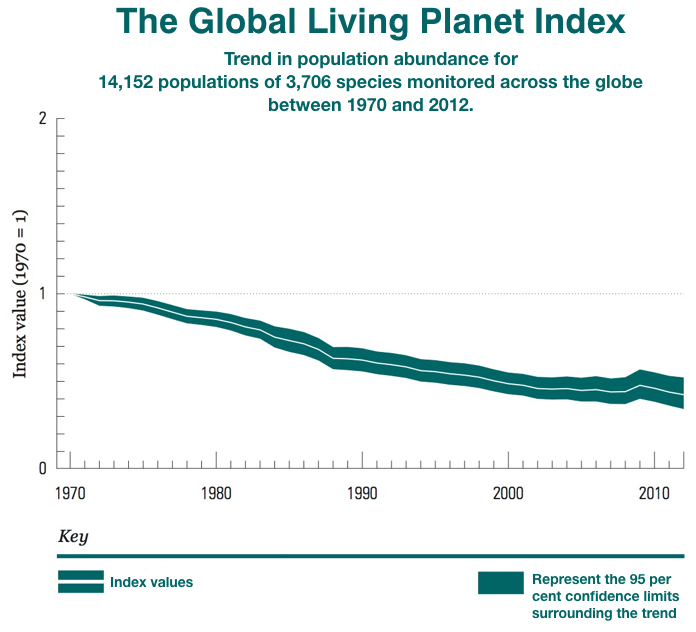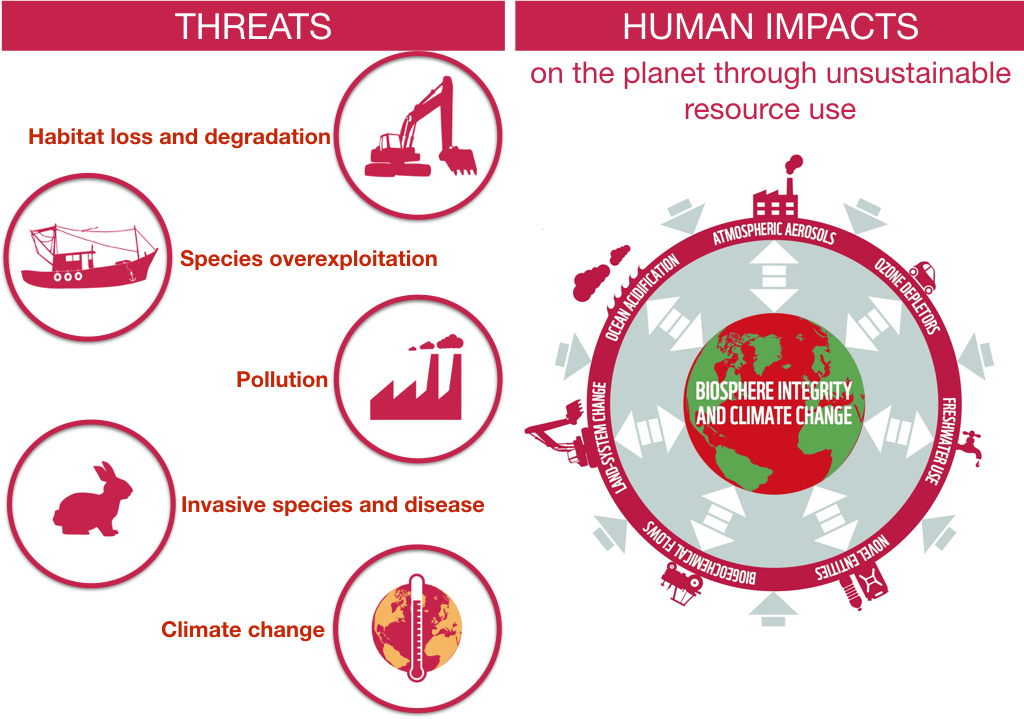We are now witnessing the first signs of the planet’s sixth mass extinction, the last of which occurred over 65 million years ago and was caused by an asteroid hitting our planet, resulting in giant tsunamis, powerful earthquakes and acid raid that obliterated 70% of all species over a period of 33,000 years.
This time human interference will be the major catalyst.
According to the latest data released by the World Wildlife Fund and the Institute of Zoology, the global populations of fish, birds, mammals, amphibians and reptiles are at risk of a 67% decline by 2020 from levels first documented in 1970. Global wildlife populations have already declined by an astonishing 58% since 1970. The WWF report, which analyzed animal data from the ocean, freshwater and land, found that freshwater species have declined by 81% between 1970 and 2012, land-based creatures by 38% and ocean dwellers by 36%. Not only are the populations of animals declining rapidly, but also the current rate of extinction is unprecedented in all of human history. A conservative estimate is that 468 vertebrates have become extinct over the last 100 years. Under normal geological conditions, this would have taken 11,400 years.
 Source: Living Planet Report 2016, WWF.
Source: Living Planet Report 2016, WWF.
“This is not just about the wonderful species we all love; biodiversity forms the foundation of healthy forests, rivers and oceans. Take away species, and these ecosystems will collapse along with the clean air, water, food and climate services that they provide us. We have the tools to fix this problem and we need to start using them now if we are serious about preserving a living planet for our own survival and prosperity.”
WWF Director General Marco Lambertini (2016).
We depend on the natural services that the Earth and biodiversity provide for our food, climate and health. Our diverse ecosystem moderates extreme weather patterns, cycles nutrients, detoxifies wastes, generates and preserves soils, purifies the air and water as well as pollinates crops and natural vegetation. If biodiversity continues to depreciate at this rate, our own existence will be under threat. Our increasing demand for the world’s natural resources has so far catalyzed biodiversity sixth extinction through the destruction of natural habitats and the increase of carbon dioxide emissions. In our search for more food and energy we have further acidified our oceans, increased the toxicity of the our air, polluted our environment and poisoned our ecosystem. Unless rapid action to restore habitats, save threatened species and reduce carbon emissions, the resulting loss in biodiversity will significantly impact human life in as little as three generations.
Source: Living Planet Report 2016, WWF.
One solution will be to drive the New Green Revolution in agriculture. Reflecting mankind’s need for survival, our very own primal investment strategy is alert to the dangers of mankind’s rapacious appetite and focuses on the solutions required for a safe, sustainable and lucrative future.
Our latest project in neem is one fine solution, offering innovation across multiple sectors – agriculture, healthcare and environmental protection. Referred to by the United Nations as the ‘Tree of the 21st Century’, this gift of nature is a cost effective and nontoxic alternative to synthetic agrochemical use, has the ability to strengthen soil nutrition and increase livestock health and offers a diverse range of applications across pharmaceutical and dermatological sectors due to its antibacterial, antimalarial, antiviral and antifungal properties. Neem is also an ideal tree for reforestation efforts, releasing more oxygen and sequestering more carbon than most other tree species.
